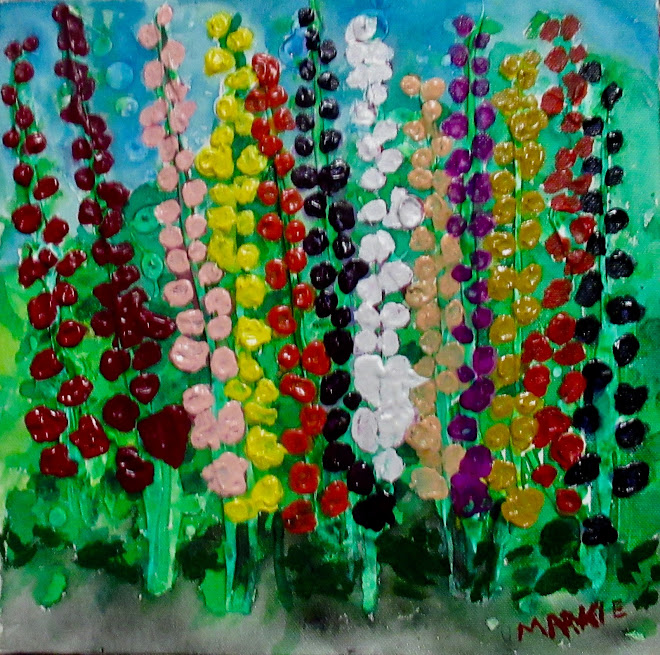I have been mired in a writing slump for the past several months. The reason is diabolically simple: I only want to write about Annie. However, I have made an agreement not to do so, because she is uncomfortable being the subject of my prattling. Therefore, in an effort to snap out of my [writing] funk, I have decided to adopt the strategy that many bloggers employ during the month of April, and begin an A-Z adventure. Today’s letter is E, b for eggplant. What? It’s not April? Sue me.
Eggplant
Growing up without eggplant in my life was perfectly OK with me. I had no experience with this fruit, and never expected to. However, Annie changed all that, not overnight, but over the course of many years. She began growing it up here on the mountain, sometime in the mid-eighties. She would prepare it, offer it to me, and I would politely decline.
However, one of the dishes she prepared was eggplant fritters, which consists of combining the eggplant with mushrooms, garlic and cheese, and other key ingredients, and then lightly frying them in oil. As set in my eating habits as I was, when I first met Annie, the fragrance of this particular dish, wafting through the late summer afternoons, drove me to set aside my reservations, and sample it. Ambrosia of the garden!
The nightshade, Solanum Melongena, also know as aubergine, brinjal eggplant, eggplant, melongene, brinjal or guinea squash, is a member of the plant Solanaceae. As a nightshade, it is closely related to the tomato and potato. This fruit is botanically classified as a berry, and contains numerous small, soft seeds which are edible, but have a bitter taste because they contain nicotinoid alkaloids; this is unsurprising as it is a close relative of tobacco. *
When eggplant is raw, it can have a somewhat bitter taste, but becomes tender when cooked, and develops a rich, complex flavor. Annie always slices it up, salts it, rinses it off and drains the sliced fruit (known as de-gorging), to soften it and to reduce the amount of fat absorbed during cooking, but mainly to remove the bitterness.
Eggplant can be stewed, as in the French ratatouille, or deep-fried as in the Italian parmigiana di melanzane. You can also batter and deep-fry eggplant and serve it with a sauce made of tahini and tamarind. Annie has found some extraordinary ways to prepare eggplant, including one of my favorites: eggplant enchiladas. She also grills it over the barbecue, and cooks a mean eggplant Szechwan.
There are so many different varieties of eggplant, it’s ridiculous. Annie has grown many of them, starting the seeds in pots, eight to ten weeks before the frost season is over, in a greenhouse. Including the heirloom varieties, eggplant has to be one of the most beautiful of all fruits. One normally thinks of eggplant as being purple, but also comes in white, and variegated (white and purple). It is not difficult to grow, but does need rich soil and plenty of water.
One of the most common ways of cooking eggplant is eggplant parmigiana, often served in Italian restaurants. I have had it served, and it usually seems to be mushy and drenched in some sort of marinara sauce, and not all that appealing. When Annie cooks this particular dish, which can be the main course, or an accompaniment to other entrees, she prepares it as I described above, and fries it lightly in oil, and serves it with either a home-prepared tomato sauce, or with a different topping, such as a ranch dressing, or even a blue cheese topping (sorry, JT). The crunchy exterior, combined with the smooth texture of the interior of the fruit, is exquisite.
I’m not going to try and convince you to rush out and start indulging in this often misunderstood fruit. All I will say is, of all the different foods that I have grown to love, after having Annie convince me I should try them, eggplant remains the crown jewel!
* I took this word-for-word from Eggplant, Wikipedia.















If you scroll down to the bottom of my blog, you will find some photos I inserted of this delicious fruit.
ReplyDeleteIt IS a very pretty fruit (but I thought it was a vegetable but I am sure I was wrong). So now I want to experiment with it so I am going to look up some stuff and make some - sometime. Is it a summer thing? or a spring thing? In other words, when am I going to find it in the market at its best?
ReplyDeletexoxoxoxoox
Eggplant is definitely a hot-weather fruit, so you will find it best from mid-summer onward. I will ask Annie for a couple of recipes, but remember the part about slicing it up, and salting it, so as to remove any bitterness! Maybe we can do an inservice...
ReplyDeleteStupid "Please select a profile..." On my own blog!
Eggplant is my favorite vegetable/fruit. Yeah, I always thought it was a veggie too. Being of Italian descent, eggplant parm was a staple. My mom made the best. I found a recipe for it, surprisingly enough, from Martha Stewart. The eggplant is sliced, egg dipped, breaded and baked, not fried. Then layered with sauce, mozzarella, parmesan and marinara sauce and baked again. It's quite delicious.
ReplyDeleteHere is the recipe link:
http://www.marthastewart.com/351777/lighter-eggplant-parmesan
Top-shelf, Lynda. I love it!
Delete